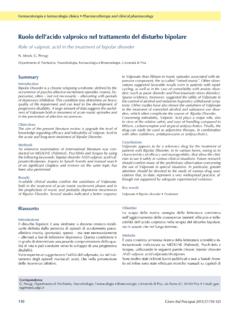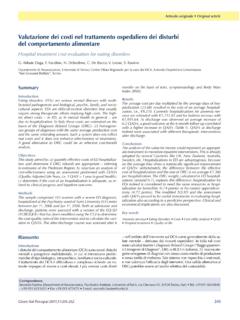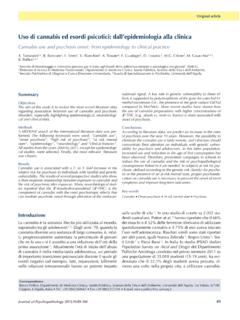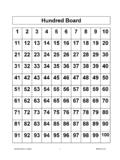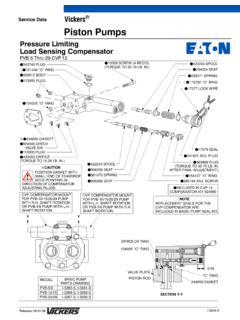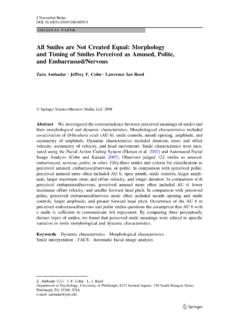Transcription of Separation anxiety disorder in the DSM-5 era
1 Modern psychopathologies or old diagnoses? Separation anxiety disorder in the DSM-5 era C. Carmassi1, C. Gesi1, E. Massimetti1, Shear2, L. Dell'Osso1. 1. Department of Clinical and Experimental Medicine, University of Pisa, Pisa, Italy; 2 School of Social Work, Columbia University, New York, USA. Summary In all cases, Separation anxiety disorder is associated with a Separation anxiety disorder has been recently classified into the severe impact on the overall functioning. Most relevant research DSM-5 section of anxiety disorders , acknowledging its role not in the field is discussed highlighting the need of a paradigm shift only in childhood and adolescence but also across the whole in which clinicians are alerted to identify and treat this con- lifespan. In the DSM-IV-TR, in fact, this condition was typically dition in all age upon the recent DSM-5 reformulation will be considered to begin in childhood.
2 Clinical data report preva- highlighted. lence rates from 20 to 40%, showing high comorbidity rates with most mental disorders . Epidemiological data highlight that Key words in fact one third of childhood cases persist into adulthood, while Separation anxiety Panic disorder anxiety disorders Complicated the majority of adult cases reports its first onset in adulthood. grief Post-traumatic stress disorder Separation anxiety disorder across the DSM-5 der are considered to be free of impairing anxiety over their lifetime. However, it has been shown that more The fifth edition of the Diagnostic and Statistical Manual than one third of subjects classified as childhood cases of Mental disorders ( DSM-5 ) 1 has recently introduced might persist into adulthood 5 and some epidemiologi- important classification changes, including the intro- cal and clinical data have highlighted that the preva- duction of Separation anxiety disorder has into the sec- lence of Separation anxiety disorder might be greater tion of anxiety disorders .
3 In the DSM-IV-TR 2, unlike among adults than in children and that the vast majority other anxiety disorders , Separation anxiety disorder of persons classified as having adult Separation anxiety was considered a condition typically beginning in child- disorder report first onset in adulthood, with a peak of hood that could be diagnosed in adults only if onset is before 18 years of age . For this reason, although most onset in early 20s 5 6. anxiety disorders typically start in childhood or ado- The essential feature of Separation anxiety disorder lescence, this was the only one placed under the label is an inappropriate and excessive anxiety concerning disorders Usually First Diagnosed in Infancy, Child- Separation , actual or imagined, from home or major at- hood, or Adolescence . Notwithstanding, the DSM-IV- tachment figures, causing clinically significant distress TR did not actually preclude a diagnosis in adulthood, or impairment in functioning.
4 Symptoms may include stating that adults with the disorder are typically over recurrent excessive stress when anticipating or expe- concerned about their offspring and spouses and expe- riencing Separation from major attachment figures or rience marked discomfort when separated from them , home, persistent and excessive worry about losing ma- such classification led clinicians to usually overlook this jor attachment figures or about potential harm befalling condition in their adult patients 3 4. to them. Furthermore, in response to fear of Separation By removing the age-of-onset criterion, the DSM-5 ac- from an attachment figure, patients may show exces- knowledged Separation anxiety disorder as a condition sive worry about experiencing a negative event ( , an that may span the entire life, but also begin at any age, accident or illness, being lost or kidnapped), refusal to leading to its inclusion among anxiety disorders .
5 De- leave home to go to school or to work, fear of being spite age of onset before 18 years is not longer needed, alone or without major attachment figures at home or in the DSM-5 states that it usually begins in childhood other settings; reluctance or refusal to sleep away from and more rarely in adolescence, somehow indicating home or to go to sleep; repeated nightmares involving that first onset in adulthood is uncommon, and that the theme of Separation ; repeated complaints of physi- the majority of children with Separation anxiety disor - cal symptoms when Separation from major attachment Correspondence Claudia Carmassi, Department of Clinical and Experimental Medicine, Section of Psychiatry, University of Pisa, via Roma 67, 56126 Pisa, Italy . Tel. +39 050 2219766 Fax +39 050 2219787 E-mail: Journal of Psychopathology 2015;21:365-371 365.
6 C. Carmassi et al. figures occurs or is anticipated. Besides deleting the mately between 20 and 40% 14 15. Manicavasagar et al. 14. age limitation, the DSM-5 requires that fear, anxiety , or showed a prevalence of adult Separation anxiety disor - avoidance last 4 weeks or more in children and adoles- der, assessed with the Adult Separation anxiety Symp- cents, and at least 6 months in adults. tom Questionnaire (ASA-27), of 46% in patients with PD. Prior to the introduction of the DSM-5 criteria, the lit- or generalised anxiety disorder . Consistently, in a large erature in this field investigated adult Separation Anxi- cohort of 508 outpatients with anxiety and mood disor - ety disorder generally using semi-structured interviews ders assessed by means of DSM-IV-TR criteria adapted based on existing DSM-IV-TR criteria adapted to adult- to adulthood, a prevalence of adult Separation anxiety hood.
7 Specific terms had, in fact, been adopted across disorder was found to be as high as , with about different studies. Adult-onset Separation anxiety disor - 50% of these latter cases reporting an adulthood onset of der refers, in fact, to an adult Separation anxiety Dis- the disorder 6. Silove et al. 15, on a large sample of anxiety order diagnosis without a documented history of child- patients, reported an estimate prevalence of adult Separa- hood Separation anxiety disorder , whereas childhood- tion anxiety disorder was 23%. onset adult Separation anxiety disorder refers to an Two recent investigations also provide some epide- adult Separation anxiety disorder diagnosis in individu- miologic data about Separation anxiety disorder . The als who have also met the criteria of Separation anxiety National Comorbidity Survey (NCS-R) 5, carried out on disorder during childhood.
8 5692 adults, found Separation anxiety disorder to be In adult patients, anxiety might focus on parents, but common in the US, as lifetime prevalence estimates of more often involves intimate partners and children 7 8, childhood and adult Separation anxiety disorder were with marked discomfort when separating from them 1. and , respectively. Diagnosis was based on While in children worries usually concern accidents, retrospective assessments using a criterion set parallel to kidnapping and deaths, adults suffering from Separa- that of the DSM-IV-TR 2, making age-appropriate modi- tion anxiety disorder may also show difficulties in fications to the criterion A symptom questions . One coping with changes in circumstances, such as moving third of childhood cases persisted into adulthood, while or getting married 1.
9 Somatic symptoms that are usually the majority of adult cases had first onset in adulthood. prominent in childhood Separation anxiety disorder , Moreover, Separation anxiety disorder was significantly such as nausea and stomachaches 2, seem to be less more common in women than men, in people between frequent in adults who instead show more cognitive 18 and 59 years, and in the never married and previous- and emotional symptoms 7. Moreover, as a way to deal ly married (compared to the currently married or cohab- with their fears and ensure a contact with attachment iting). More recent data from the World Mental Health figures, adults with Separation anxiety disorder might Surveys of the World Health Organization (WHO) show make frequent phone calls, adhere to rigid routines or lifetime prevalence Separation anxiety disorder rates talk excessively.
10 As high as across Countries, with almost a half of Despite most youths suffering from Separation anxiety lifetime onsets occurring after the age of 18 16. Control- disorder are thought to make a good recovery through pu- ling for lifetime comorbid disorders , age and country, berty and adult life 1, the long-term outcome of childhood Separation anxiety disorder was signi cantly associat- Separation anxiety disorder is actually not clear. Besides ed with being female, having low through high-average some studies identifying it as either a speci c risk factor education, maladaptive family functioning childhood, for adult panic disorder (PD) 9 or a general risk factor for other childhood adversities, and a variety of lifetime multiple adult mental disorders 10-12, growing clinical and traumatic events.
